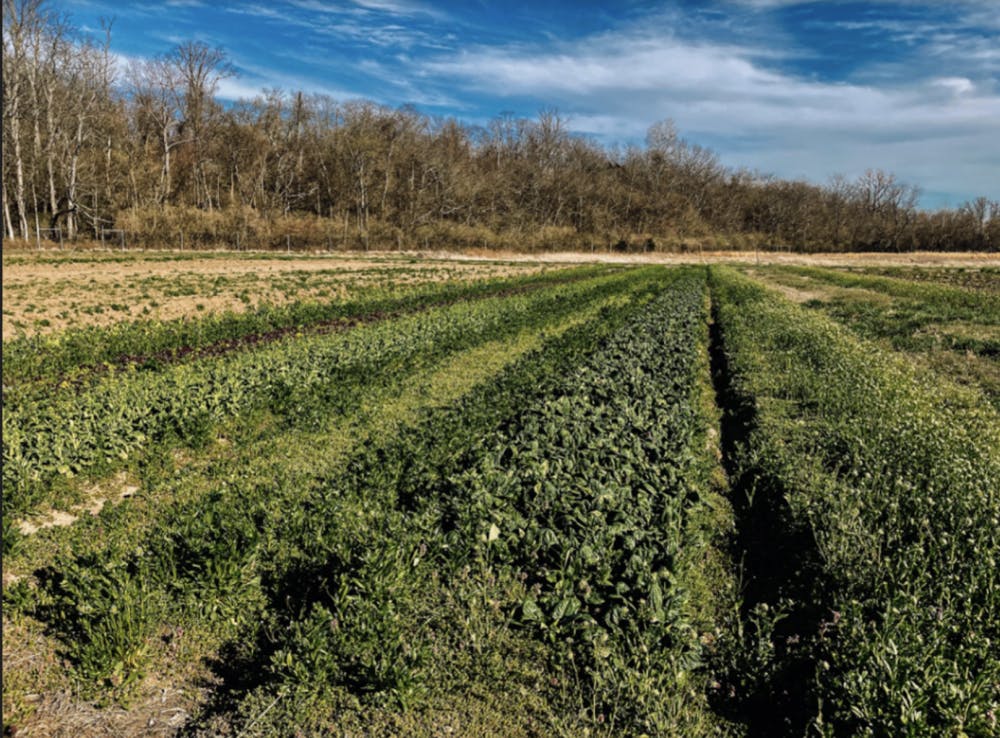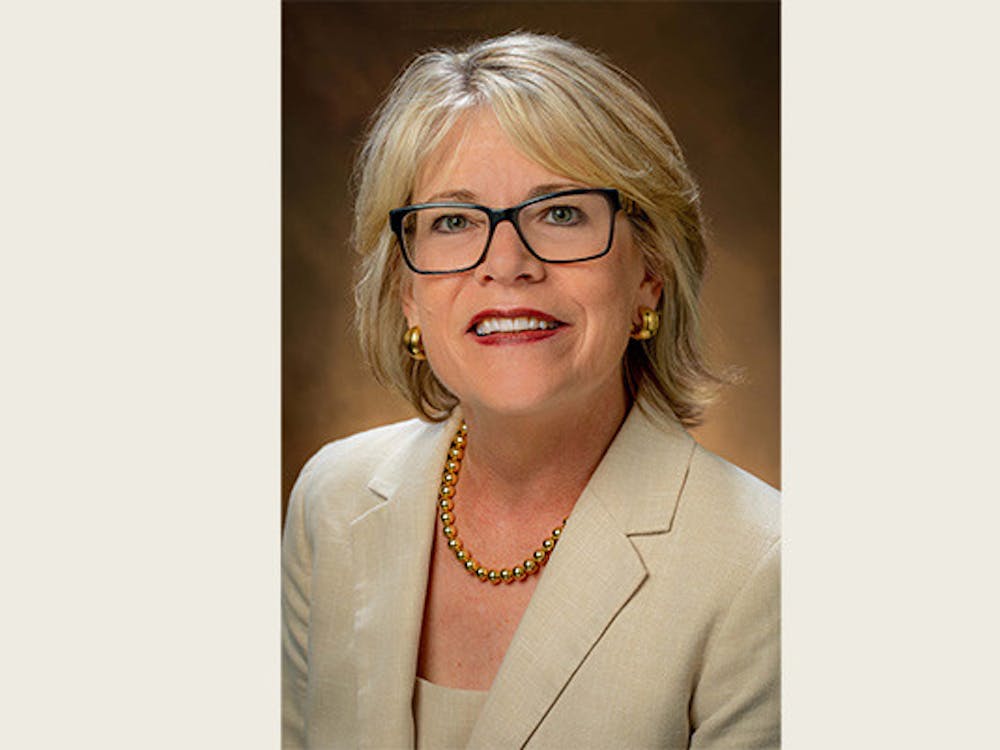By: Ivy Richter

How regenerative agriculture serves up food and mitigates climate change
Large, green posters above supermarket produce aisles and prominent packaging labels pasted on packaged fruits and vegetables scream “organic.” Companies proudly promote their limited use of pesticides and fertilizers with the flashy, green USDA certification label. Organic is a step in the right direction when it comes to more sustainable farming. But there is a new label that represents practices that sustainably source food AND mitigate climate change.
That practice is regenerative agriculture, and the label is called Regenerative Organic Certified. It is a system that harmonizes with the environment by replenishing soil rather than degrading it. Going “beyond sustainable,” regenerative practices focus on the health of the soil, seeking to maximize the intake of carbon dioxide from the air in a process called carbon sequestration.
In the Cincinnati suburbs of Indian Hill, Turner Farm has more than 230 acres of regeneratively cultivated land. Turner Farm organically produces more than 50 types of vegetables, as well as sheep, cows and chickens. To main a regenerative and organic farm, commercial fertilizers and pesticides are not used.
“In my hardline definition, you need no outside sources of something like amendments,” said Daniel Losekamp, manager of livestock and pastures at Turner Farm.
He gives an example: “You’re gardening and your calcium levels are dropping, so you bring in calcium in the form of lime. If you have to bring in amendments from somewhere else, you're taking it from somewhere else, therefore you're not sustainable. “That's kind of an extreme point of view,” Losekamp acknowledged.
Rodale sparks regenerative farming movement
Regenerative farming is not a new concept. Small farms down through history have grown a mix of crops and animals that complement each other, replenishing soil through manure application, crop and pasture rotation, and nitrogen-fixing cover crops in the off-season. These practices feed whole families, year-round. It’s just that commercial large-scale farming has moved dramatically away from this way of life.

Enjoy what you're reading?
Signup for our newsletter
In the late 1940s, the Rodale Institute was founded by J.I. Rodale to research soil health, and communicate good practices for it. Its magazine Organic Gardening was a best-seller for decades in America. Today, Rodale is among the major players behind the Regenerative Organic Alliance that established this new food label.
When the USDA passed the U.S. Organic Foods Product Act in 1990, there was backlash from the original organic growers. The act “didn’t really capture the concept that the organic growers, the old-style organic growers, were doing,” said Charles Griffin, director of the Miami University farm and a seasoned organic farmer. “They were looking at the farm as an organism, and saying, ‘What’s the best thing I can do for my farm?’ ”Griffin said the term “regenerative” is perceived as spiritual or religious, elements that he sees as fundamentals of agriculture.
“Agricultural scientists have this spiritual connotation,” Griffin said. “There is a business of being a true human being and looking at the world in a way that can’t just use their environment to extract value from it.”
What makes a closed-loop, regenerative growing system?
The industrial landscape of today is a far cry from the “old-style growers” focusing on natural cultivation. Large farms are primarily focused on output and profits, placing an importance on high-yield crops such as corn. Crops are planted in a monoculture fashion, or single crop planting, which depletes the soil's nutrients and causes soil erosion.
“The government used to think that the best thing to do is to just not touch the land, so therefore it wouldn’t degrade anymore,” Losekamp said. “What happens (in that practice) is you’re not supposed to put animals, chemicals, or maintain it - you literally don’t touch it. “But nature doesn’t function like that,” he added. In its closed-loop system, regenerative agriculture is a harmonious system of practices, each with a unique purpose to sustainably cultivate the earth.
- Compost plays a huge role in providing nutrients and fertilizer to the soil, using animal, plant, and food waste as a natural alternative to chemically produced fertilizers.
- Cover crops such as clover, field peas or alfalfa are grown in-between seasons to protect soil, prevent erosion, and add nutrients.
- Unlike industrialized farms, regenerative farms focus on reduced or zero tillage of the soil. In the industrialized landscape, tillage, or seedbed preparation, relies on machines that break the soil and release carbon into the atmosphere to be oxidized. Regenerative methods reduce this practice to eliminate mechanical tilling.
Back at Turner Farm, Losekamp is focused on maintaining pasture to promote the health of the farm.
“We use the animals to create the impact we need to keep the system healthy. We do that by mimicking the bison herds of the American plains and the wild beasts of the Serengeti, in nature,” Losekamp said.
Using electrified net fencing, the Turner Farm team keeps the animals on a small piece of land, moving the location of the fenced area each day. Throughout various growing seasons, the zone for the animals is precisely drawn so by the end of the growing season, all of the land has been touched by the animals. They call this intense impact, or rotational grazing. When the animals are moved from one area of land to the next, it has time to recover, resulting in 98% rest period for the plants to renew energy reserves, regain their strength, and be prepared for long-term, maximum production, according to Losekamp.
Ultimately, a well-maintained pasture from land managers like Losekamp creates healthy soil with a nutrient-rich water system and a decreased likelihood of erosion. Diversity of crops also plays a role in benefiting the health of the pasture. “The more diverse a plant community, and I’m talking pastures right now, the greater the chance that the green solar panel will be pumping sugar into the ground at any given time,” Losekamp said.
This ‘green solar panel’ is the process of photosynthesis, in which plants produce glucose by using sunlight, carbon dioxide and water from the air to produce energy. Diversity of the pasture is key to creating a thriving microbiome in the soil, resulting in increased health and production capabilities.
Lassoing carbon through careful farm practices
As regenerative agriculture has moved into modern times, the purpose behind its role in both nature and agriculture systems has changed. Agriculture plays a huge role in climate change, with forestry and agriculture being responsible for 25 percent of all human-created greenhouse gas emissions. That’s where regenerative agriculture comes into play, as it mitigates climate change through carbon sequestration.
Gina Quattrochi is director of operations at Kiss the Ground, a non-profit focused on increasing awareness about soil health.
“We believe that the soil holds a significant amount of carbon and enough carbon to neutralize the air by drying it out of the atmosphere and into the ground, which would reduce global warming,” Quattrochi said. “We believe that that's one of the most significant ways to neutralize carbon. So that's why we focus on regenerative agriculture.”
In a 2012 report, the Rodale Institute stated that data from farming systems and pasture trials shows that 100% of annual carbon emission could be sequestered with a switch to “available and inexpensive management practices,” or regenerative organic agriculture. With climate change presenting a pressing challenge for industries to mitigate their impact on warming the planet, organizations like Kiss the Ground are instrumental in advancing these efforts.

Kiss the Ground offers soil advocate training to farmers to teach them how to regeneratively cultivate the earth, as well as soil training for non-farmers to educate individuals on the importance of maintaining healthy soil.
An eye on the 2023 Farm Bill
One of the main initiatives they are working on is supporting the 2023 Farm Bill. Every five years the Farm Bill, currently called the Agriculture Improvement Act of 2018, is updated, and it will be up for revision in the next two years. It is a package of legislation looking at subsidies, how food is grown, and insurance, and everything in between that results in going from a “seed to a plate”.
“We hope to get 10 million signatures to support our recommendations for this farm bill, which will reduce subsidies for monoculture crops and instead incentivize regenerative practices,” Quattrochi said.
The complex system of food not only impacts farmers, the animals, and the earth, but everyone. As you push your cart through the brightly lit aisles of a grocery store and fill it with organic produce, keep an eye out for the new label for Regenerative Organic Certified produce. It’s a voluntary label for producers, not a government certification. But the label tells you that the producer prioritized soil health, animal welfare, and social fairness in an effort to promote holistic agriculture practices.
-----
Ivy Richter is a senior majoring in journalism and fashion business. A version of this article also was published on Medium:https://medium.com/@ivyrichter/e950f3e58620




